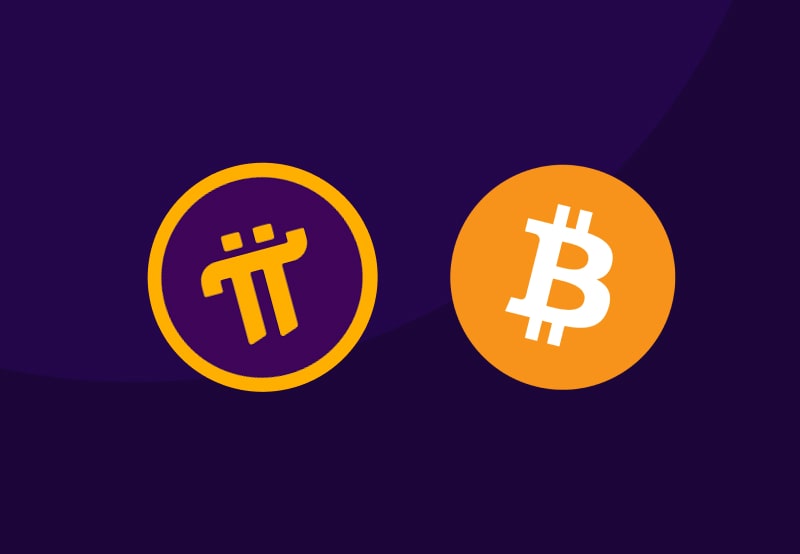Will Pi Coin Be the Next Bitcoin? A quick Reality Check!
Jan 12, 2025
The Pi Network has experienced remarkable growth since its inception, reaching over 60 million users (or “Pioneers”) by 2024. Its user-friendly design and mobile mining approach have made it one of the largest communities in the cryptocurrency landscape. Despite this success, the network's timeline for achieving key milestones—like transitioning to Mainnet—has been slower than anticipated, testing the patience of its community.
This article dives into Pi Network’s evolution, its unique challenges, and its future potential in the cryptocurrency ecosystem.
Table of Contents
What Is Pi Network?
The Growth of Pi Network: Over 60 Million Users
How Pi Mining Works on Mobile Devices
Challenges of Pi Coin’s Distribution
Understanding the Misconception of Mobile Mining
Transitioning to Mainnet: What It Means
The Role of Early Adopters in Pi’s Economy
Ad Revenue and Data Monetization
Potential Risks Associated with Pi Network
How Does Pi Compare to Bitcoin?
The Value Proposition of Pi Network
User Concerns: Privacy and Data Security
Future Prospects for Pi Network
Can Pi Network Become the Next Bitcoin?
Conclusion: Pi Network’s Journey Ahead
What Is Pi Network?
Pi Network is a decentralized cryptocurrency project designed to make digital currency accessible to everyone. Unlike Bitcoin or Ethereum, Pi Network’s unique appeal lies in its mobile mining model, where users can earn Pi Coins through daily participation using a smartphone app.
The Growth of Pi Network: Over 60 Million Users
As of 2024, Pi Network has amassed a community of over 60 million users globally. These users, called "Pioneers," engage daily to mine Pi Coins with minimal technical knowledge or energy consumption, contributing to the network's rapid growth.
How Pi Mining Works on Mobile Devices
Pi Network allows users to “mine” cryptocurrency without specialized hardware. Instead, they log into the app daily and click a button to earn rewards. However, this mining is not computational in nature; rather, it is more about user engagement and network building.
Challenges of Pi Coin’s Distribution
Pi Coin’s early adopters mined coins at significantly higher rates due to lower user competition. This has led to a disparity in coin holdings, where early participants have amassed large amounts of Pi compared to newer users.
Understanding the Misconception of Mobile Mining
While Pi Network markets its mobile mining as innovative, it differs fundamentally from traditional cryptocurrency mining. Users aren’t solving complex algorithms or contributing to blockchain security. Instead, they are participating in a simulation designed to build community interest.
Transitioning to Mainnet: What It Means
Pi Network's shift to Mainnet could revolutionize its ecosystem. This transition would allow Pi Coins to interact with external wallets, enabling real-world transactions and trading on cryptocurrency exchanges.
The Role of Early Adopters in Pi’s Economy
The large holdings of Pi Coins by early adopters could pose challenges if the currency becomes tradable. A mass sell-off could crash its value, necessitating measures like trade restrictions or incentivized holding.
Ad Revenue and Data Monetization
Pi Network generates income through advertisements displayed to its vast user base. Additionally, the network collects extensive user data, raising questions about how this information is monetized and its implications for privacy.
Potential Risks Associated with Pi Network
The network’s reliance on user data and the potential for a sudden sell-off when coins become tradable are key risks. Additionally, its dependency on ad revenue could make it vulnerable if user engagement declines.
How Does Pi Compare to Bitcoin?
Unlike Bitcoin, Pi Network lacks the technological backbone of blockchain mining. However, its focus on accessibility and user engagement sets it apart as a more beginner-friendly cryptocurrency option.
The Value Proposition of Pi Network
Pi Network aims to bridge gaps in the cryptocurrency market by offering an eco-friendly, accessible, and easy-to-use platform. This focus on usability could make it a compelling choice for non-technical users.
User Concerns: Privacy and Data Security
The network's data collection practices, including its Know Your Customer (KYC) process, have raised alarms among privacy advocates. Users must weigh the trade-off between accessibility and the potential misuse of their personal data.
Future Prospects for Pi Network
For Pi Network to succeed, it must transition to Mainnet and establish itself within the broader cryptocurrency ecosystem. Additionally, addressing privacy concerns and ensuring a balanced economy will be critical to its long-term viability.
Can Pi Network Become the Next Bitcoin?
While the likelihood of Pi Network replacing Bitcoin is low, it doesn’t need to achieve this level of success to be impactful. By focusing on areas like accessibility and sustainability, Pi Network can carve out a unique niche in the cryptocurrency space.
Conclusion: Pi Network’s Journey Ahead
Pi Network has achieved significant growth by making cryptocurrency more accessible. However, its success hinges on transitioning to Mainnet, balancing its economy, and addressing user concerns. While it may not become the next Bitcoin, its potential to transform the crypto landscape is undeniable.
Frequently Asked Questions (FAQs)
1. What is the current status of Pi Network?
Pi Network is in the process of transitioning to Mainnet, where its coins may become tradable on cryptocurrency exchanges.
2. How do I mine Pi Coins?
You can mine Pi Coins by downloading the Pi Network app and logging in daily to claim rewards by pressing a button.
3. Are Pi Coins real cryptocurrency?
Currently, Pi Coins function within the Pi Network ecosystem. Their real-world value will depend on the network’s successful transition to Mainnet.
4. Is Pi Network safe to use?
While Pi Network is user-friendly, its data collection practices have raised concerns. Users should review the terms carefully before signing up.
5. Will Pi Coins become valuable in the future?
The value of Pi Coins depends on the network’s ability to deliver on its promises, including integrating with external wallets and exchanges.
6. Can Pi Network replace Bitcoin?
Pi Network is unlikely to replace Bitcoin but may find success by addressing accessibility and usability gaps in the crypto market.

Pi Network Token Crash Raises Transparency Concerns

Pi Network Coin Gains Momentum in Crypto Market

Binance Pi Network Listing Rumors Spark After Logo Clue and Blockchain Activity

Pi Network Price Surge: What’s Driving the 33% Spike in PI Token Value?

Pi Coin Trading Halted | BitMart & Banxa Delisting News

Pi Coin Price Prediction 2025: Chainlink Integration Fuels 228% Surge Forecast to $2.50

Pi Network Price Surge: Chart Signals a Potential 135% Bullish Breakout

Why KYB Compliance Is Key for Exchanges Eyeing Pi Network Market Entry

Pi Ad Network Expansion: Now Open to All Ecosystem Listed Pi Apps

Pi Network Price Drops to All-Time Lows as Supply Pressure Builds

